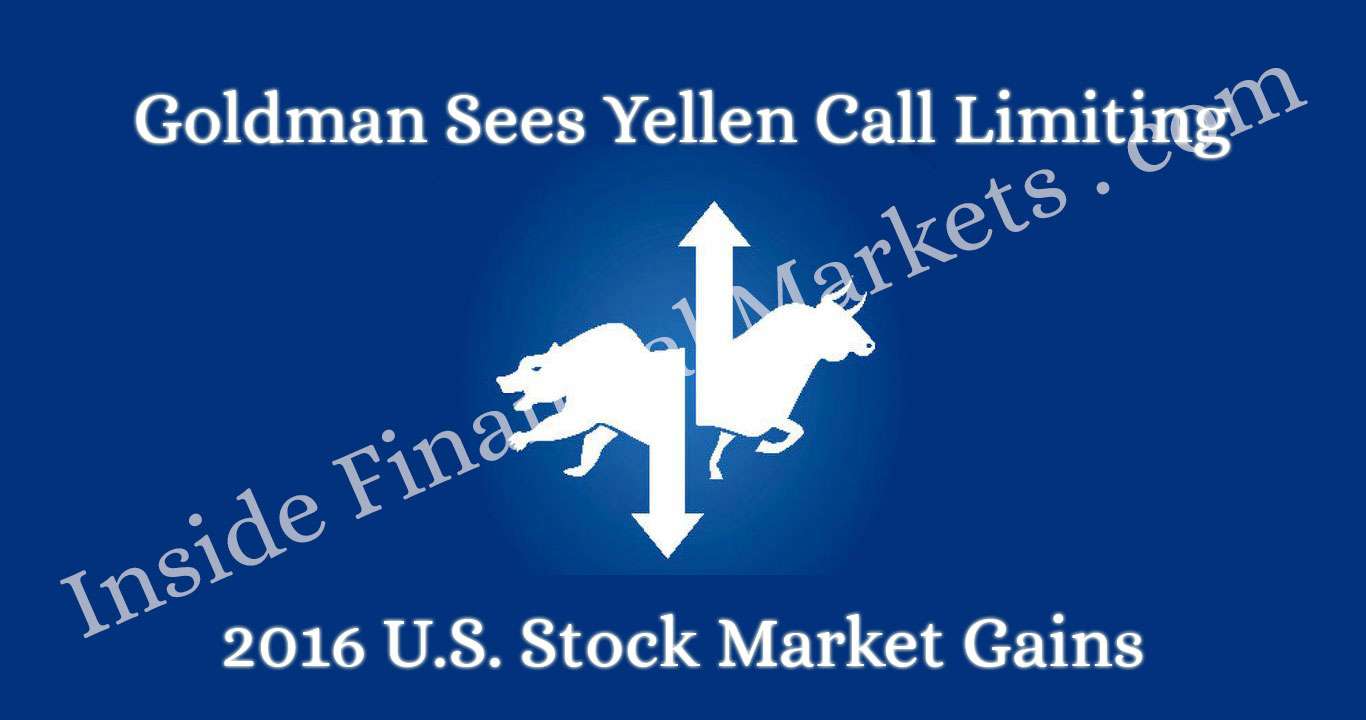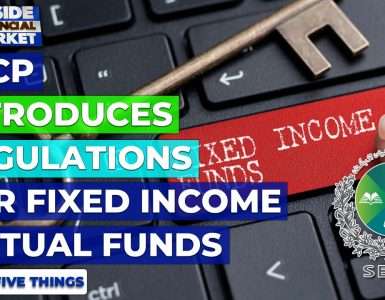The “Yellen call” may soon replace the Bernanke put as standard operating procedure at the Federal Reserve. And that’s not great news for the U.S. stock market.
So say strategists at Goldman Sachs Group Inc. in reports for clients this week. With the Yellen call, the central bank would be inclined to raise interest rates as the economy and stock market improve, limiting gains in equities. That’s the flip side of the Bernanke put — the idea that equity investors were protected against big market slumps because the Fed would ease policy to limit the damage.
“The inflection point for this shift to a tightening bias will arguably arrive in 2016,” chief credit strategist Charles Himmelberg and other Goldman analysts said in a report Thursday.
Under a scenario which they named for Fed Chair Janet Yellen, rallies in equities and other risky assets “may be met by less accommodative monetary policy.” That contrasts with the Fed’s perceived reaction function under Yellen’s predecessor, Ben S. Bernanke.
Partly as a result, Himmelberg and his colleagues see “limited upside” for U.S. equities in 2016. Specifically, Goldman strategists forecast that the Standard & Poor’s 500 Index will hit 2,100 next year. It stood at 2,080.76 at 2:15 p.m. in New York.

In a separate report, the group’s economists said they are more hawkish than the financial markets about Fed policy for the first time a decade.
Led by chief economist Jan Hatzius, the Goldman team sees the Fed lifting interest rates by 0.75 to one percentage point next year after an initial 0.25-point increase in December.
“The risks to market pricing are on the side of more rather than fewer rate hikes — the first time in a decade that we have had a hawkish view relative to the market,” Hatzius and economist Jari Stehn wrote in a Nov. 18 report.
Traders in the federal funds futures market in Chicago generally are betting on a Fed rate increase in 2016 of 0.50 point or less, according to calculations by Bloomberg. They put the probability of a rate hike next month at more than 65 percent.
The calculations are based on the assumption the effective fed funds rate will average 0.375 percent after liftoff. The Fed hasn’t raised rates since 2006. Its current funds target is zero to 0.25 percent.
As the central bank raises rates, the yield on the 10-year Treasury note will rise to 3 percent by the end of next year, according to Goldman analysts. The yield stood at 2.25 percent at 2:15 p.m. on Thursday in New York.
More Inflation
Behind the group’s more hawkish Fed call: rising inflation. Consumer prices are forecast to rise 1.8 percent in 2016. In October, prices were just 0.2 percent higher than a year earlier, held down in part by falling energy costs.
With both the European Central Bank and the Bank of Japan projected to ease monetary policy over the next few months, the Fed’s move to a tighter stance is a recipe for a higher dollar, according to Goldman’s analysts and economists.
Himmelberg and his fellow strategists see the greenback rising to 95 cents per euro and 130 yen within the next 12 months, with a good chance that both levels could be reached sooner than that. The dollar stood at $1.0735 per euro and 122.76 yen.

Hatzius and Stehn called the expected appreciation of the dollar “mostly a healthy development” for the world economy because it will shift demand from the U.S. to other countries where growth is weaker. That swing will occur because a stronger greenback will make U.S. exports more expensive and imports into the country less costly.
A dollar rise won’t be good news for China, though, because of its currency’s link to the greenback, the Goldman economists said.
They see global growth picking up to 3.5 percent in 2016 from 3.2 percent this year. Much of the gain reflects stabilization in some of the hardest-hit emerging market economies, particularly Russia.
“Although the best part of the cycle for risky assets in the developed markets is likely behind us, we think the picture remains reasonably constructive and it still seems too early to hunker down for the next recession,” they said.









